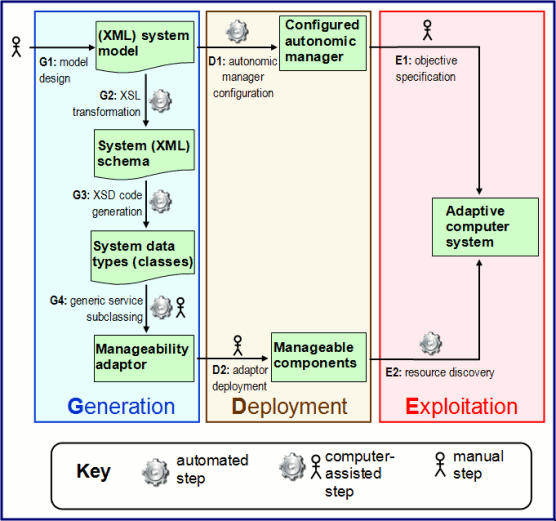Overview

The success of mainstream computing is largely due to the widespread availability of general-purpose architectures and of generic approaches that can be used to solve real-world problems cost-effectively and across a broad range of application domains. The GPAC framework aims to provide similar benefits in the realm of autonomic and adaptive IT systems.
GPAC consists of a generic, model-based development method and a .NET service-oriented software platform for the development of autonomic computer systems. The key component of the GPAC software platform is a reconfigurable autonomic manager that can be used to add self-management capabilities to existing IT and IT-controlled systems. This autonomic manager comprises a combination of application-independent, reusable code and application-specific code that is generated automatically at run-time. The automated code generation requires building a model of the computer system to which adaptive behaviour will be added; and supplying this model to the GPAC autonomic manager in a run-time configuration step.
GPAC has been used successfully in several application domains. Recent GPAC-based autonomic systems developed by external researchers and practitioners include an autonomic solution for adaptive information collection, storage and management on military vehicles; and autonomic resource management solutions for a Pioneer 2AT-8 mobile robot. For more information about the GPAC framework and many of its applications see these GPAC-related publications.
GPAC is an academic project. The GPAC software platform is freely available under the GNU Affero General Public Licence, and the latest GPAC version can be downloaded here.
Copyright (C) 2009-2014 Radu Calinescu <Radu.Calinescu@york.ac.uk>